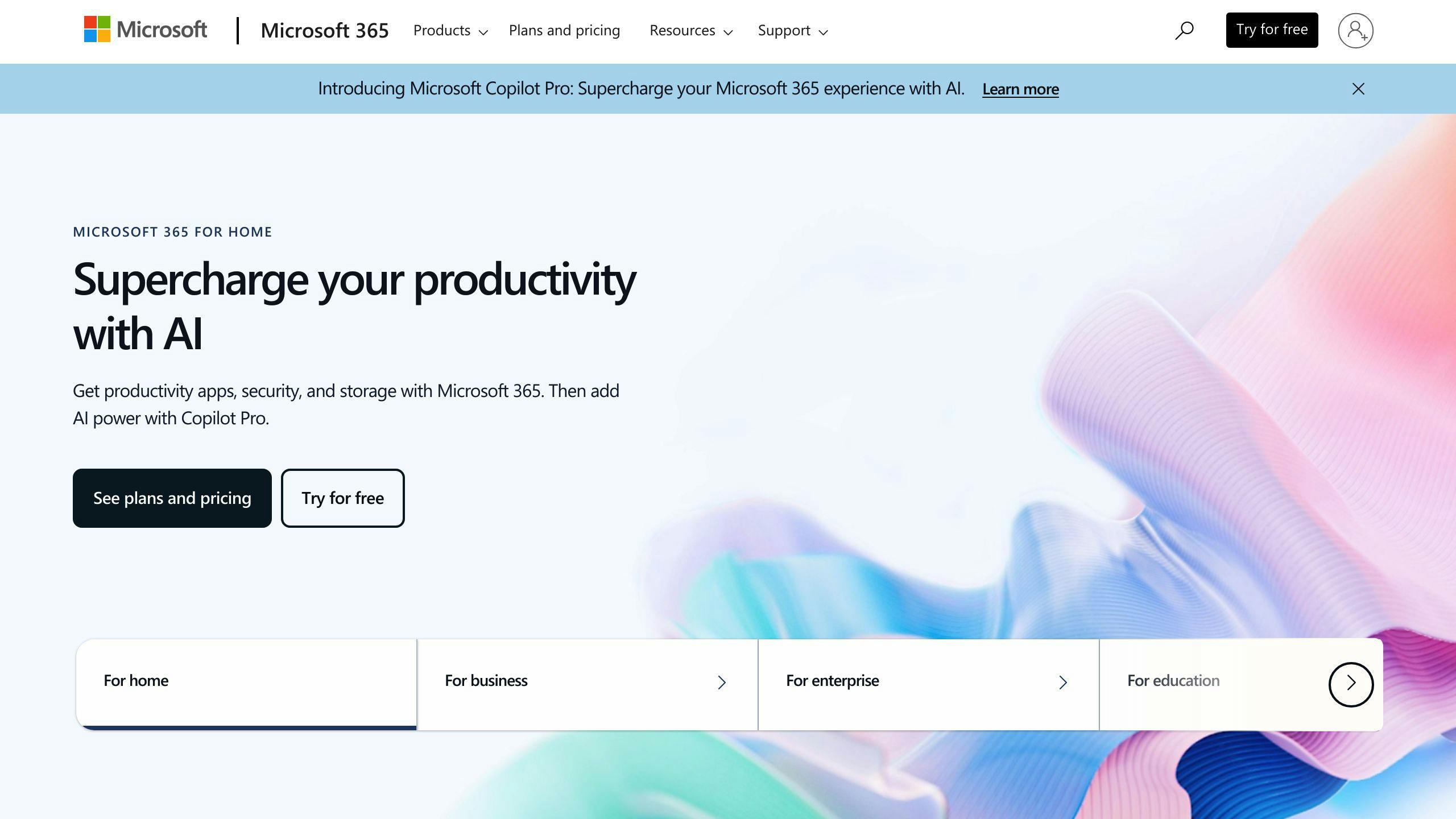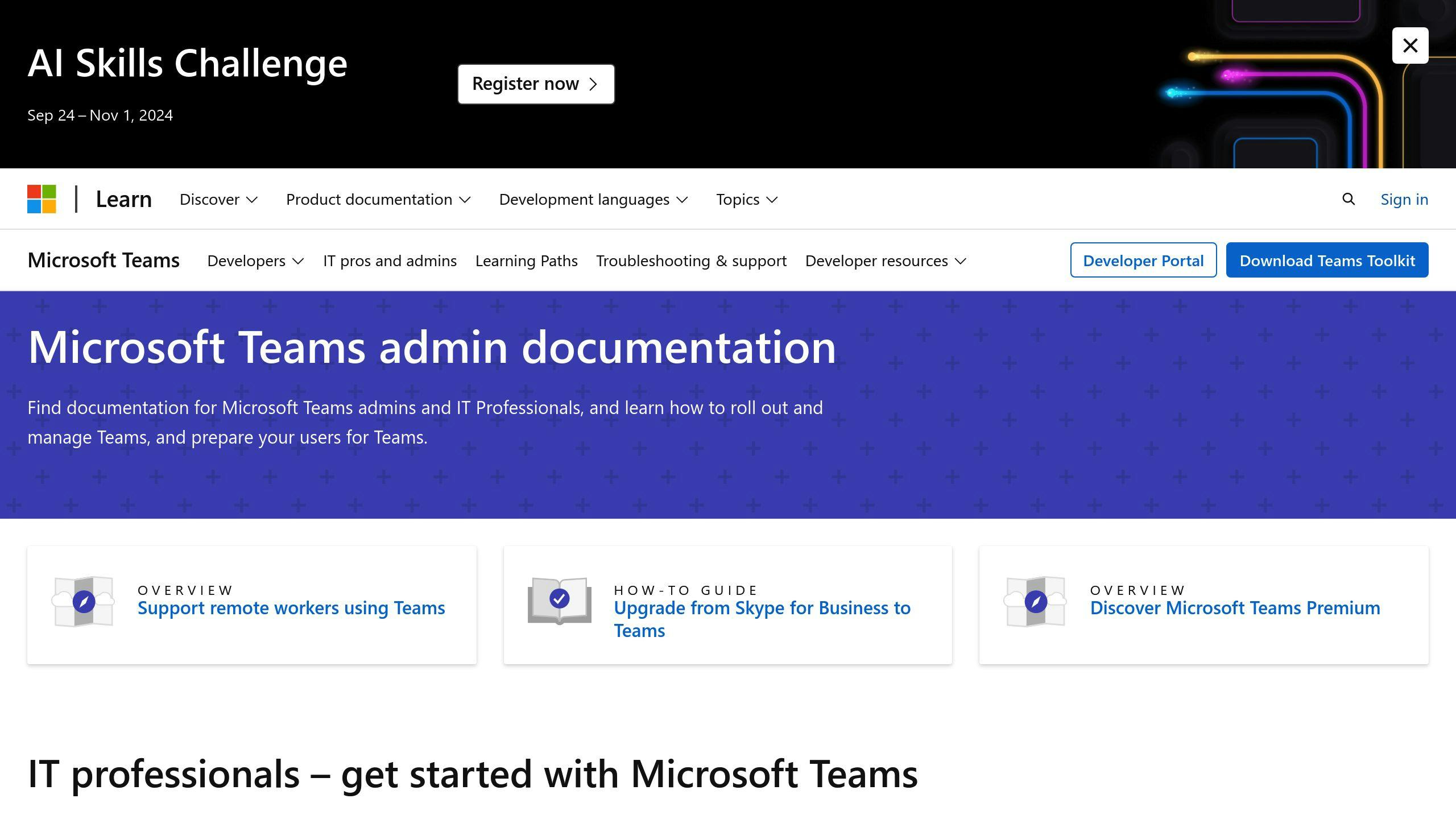Ownerless teams in Microsoft 365 can create security risks and productivity issues. Here’s how to handle them:
-
Find ownerless teams using:
- Teams Admin Center
- PowerShell scripts
- Third-party tools like ShareGate
-
Fix ownerless teams by:
- Adding new owners (at least 2 per team)
- Archiving inactive teams
- Deleting unnecessary teams
-
Prevent future ownerless teams:
- Set clear ownership policies
- Use Power Automate for auto-assignments
- Conduct regular team audits
-
Best practices:
- Always have multiple owners
- Check ownership frequently
- Train team owners on their responsibilities
Quick tips:
- Use PowerShell for bulk changes
- Back up data before deleting teams
- Set up alerts for ownerless teams
Remember: Regular maintenance keeps your Microsoft 365 environment secure and efficient.
| Task | Tool | Frequency |
|---|---|---|
| Find ownerless teams | Teams Admin Center | Weekly |
| Add new owners | PowerShell | As needed |
| Audit ownership | ShareGate | Monthly |
| Review inactive teams | Custom script | Quarterly |
Don’t let ownerless teams slip through the cracks. Stay on top of team management to keep your Microsoft 365 setup running smoothly.
Related video from YouTube
Ownerless teams in Microsoft 365

How teams become ownerless
Teams can lose their owners in a few ways:
- The owner’s account gets deleted
- An owner changes roles and drops their team duties
- The owner leaves the company or switches departments
A 2022 IT Pro Today survey found that 67% of companies had ownerless teams due to staff changes.
Risks of ownerless teams
No owner? Big problems:
- Security gaps: No one’s watching who can access what
- Team can’t grow: Members can’t update settings or add people
- Rule-breaking: No oversight can lead to compliance issues
- Lost data: Important info might not get saved properly
Here’s a real example from TechCorp in 2023. Their marketing team had no owner for 3 months:
| Problem | Result |
|---|---|
| Old member list | 5 ex-employees still had access |
| No one managing permissions | Budget info left exposed |
| Missed alerts | 15% over storage limit |
Microsoft’s advice?
"Always have at least two active owners for every team. This keeps things running if one owner isn’t around."
Finding ownerless teams
Want to keep your Microsoft 365 environment secure? You need to spot teams without owners. Here are three ways to do it:
Teams Admin Center

Quick visual check:
- Log in as admin
- Go to "Teams"
- Look for "0" in Owners column with an exclamation point
Great for small orgs, but slow for big ones.
PowerShell power
For faster checks, use this PowerShell script:
$teams = Get-Team
$ownerlessTeams = $teams | Where-Object { (Get-TeamUser -GroupId $_.GroupId | Where-Object {$_.Role -eq 'Owner'}).Count -eq 0 }
$ownerlessTeams | ForEach-Object { Write-Host "Ownerless team found: $($_.DisplayName)" }
This lists all ownerless teams in a snap.
Third-party tools
Tools like ShareGate can automate the process:
- Auto-detect ownerless teams
- Generate ownership reports
- Easy owner promotion
AdminDroid offers a "Teams Without Owner" report with:
| Info | What it shows |
|---|---|
| Team Name | The ownerless team |
| Description | Team’s purpose |
| Member Count | How many members |
| Guest Count | Number of guests |
| Teams Type | Private or public |
| Archive Status | Archived or not |
| Group ID | Team’s unique ID |
Pick the method that works best for your org size and needs.
Fixing ownerless teams
You’ve spotted teams without owners. Now what? Let’s fix them up:
Add new owners
Got a team with no captain? Here’s how to put someone in charge:
1. Teams admin center:
- Teams > Manage teams
- Pick the lonely team
- Hit "Members" and upgrade someone to "Owner"
2. PowerShell (for bulk changes):
$teamId = "your-team-id"
$newOwnerId = "user-id-to-promote"
Add-TeamUser -GroupId $teamId -User $newOwnerId -Role Owner
Archive dead teams
For teams that are just collecting dust:
1. Teams Admin Center:
- Teams > Manage teams
- Pick the ghost town
- Click "Archive"
- Lock down the SharePoint site if you want
2. PowerShell:
Set-Team -GroupId $teamId -Archived $true
Trash unwanted teams
When a team’s time is up:
1. Teams Admin Center:
- Teams > Manage teams
- Select the goner
- Hit "Delete"
2. PowerShell:
Remove-Team -GroupId $teamId
| What to do | Click this | Or type this |
|---|---|---|
| New boss | "Members" then "Owner" | Add-TeamUser |
| Mothball | "Archive" | Set-Team |
| Nuke it | "Delete" | Remove-Team |
Don’t forget to tell team members what’s up. And ALWAYS back up before you delete.
Alex Simons, big cheese at Microsoft’s Identity Division, says: "Keep your team ownership in check. It’s like flossing for your Microsoft 365 setup."
sbb-itb-8be0fd2
Stopping future ownerless teams
Want to keep your Microsoft 365 environment clean? Here’s how to avoid ownerless teams:
Setting team rules
Create clear ownership policies:
- 2+ owners per team
- Backup owners assigned
- Quarterly ownership reviews
Auto-assigning owners
Use Power Automate to stay on top:
1. Alert flow:
Trigger: Team becomes ownerless
Action: Notify IT admin
2. Auto-assign flow:
Trigger: Team ownerless for 7 days
Action: Promote most active member to owner
Regular team checks
Keep tabs on team management:
| Task | Frequency | Tool |
|---|---|---|
| Audit ownership | Monthly | Teams Admin Center |
| Ownerless team report | Weekly | PowerShell script |
| Inactive team review | Quarterly | ShareGate |
Tony Redmond, Microsoft MVP and author of "Office 365 for IT Pros", says: "Proactive governance prevents ownerless teams. Regular audits and automation save admins tons of time."
Tips for good team ownership
Want to keep your Microsoft 365 teams secure and productive? Here’s how to manage team ownership like a pro:
Use multiple owners
Don’t put all your eggs in one basket. Always have at least two owners per team. Why? If one owner leaves or goes MIA, your team won’t be left high and dry.
| Owners | Risk | What to do |
|---|---|---|
| 1 | High | Add another owner ASAP |
| 2 | So-so | Think about a third for big teams |
| 3+ | Low | You’re good to go |
Check ownership often
Stay on top of your game with regular check-ins:
- Weekly: Run a quick PowerShell script to spot any ownerless teams
- Monthly: Use the Teams Admin Center for a full ownership audit
- Quarterly: Deep dive into inactive teams and owners
Train team owners
Your owners need to know their stuff. Here’s how to make that happen:
- Monthly 30-minute training sessions
- Create a cheat sheet for common owner tasks
- Set up a Teams channel for owner Q&A and tips
"Having at least 2 team owners is a smart move. It’s your safety net for keeping things running smoothly, even when someone’s out of the picture." – Cagdas Davulcu, CEO at Valprovia GmbH
Fixing common problems
Managing ownerless teams in Microsoft 365 can be tricky. Here’s how to tackle some common issues:
Access errors
Can’t add a new owner? Try this:
- Check your admin rights
- Head to the Microsoft 365 admin center
- Go to Teams & Groups > Active teams & groups
- Click the team name
- Add the new owner under "Members"
Ahmed Masoud from Microsoft Community Support breaks it down:
"Log in to Microsoft 365, go to aka.ms/admin. Navigate to Teams & Groups >> Active teams & groups. Click the Team name. In the window that opens, go to Members >> ‘View all and Manage Owners’. Add new owner. Delete old owner."
Update delays
Changes not showing up? It might be a sync issue between Azure AD and Teams.
- Give it 24 hours
- Still no luck? Use PowerShell to force a sync
- If problems persist, reach out to Microsoft Support
Guest owner issues
Guest users as team owners can be a headache. Here’s what to do:
| Problem | Solution |
|---|---|
| Guest can’t use owner features | Check Azure AD guest permissions |
| Guest owner invite not working | Resend invite or add manually |
| Too many guest owners | Set a policy to limit guest owners |
Conclusion
Managing ownerless teams in Microsoft 365 is key for security, productivity, and teamwork. Here’s what you need to do:
- Find teams without owners
- Add new owners (at least two)
- Set up alerts for ownerless teams
- Do regular checks
- Train team owners
Here’s a quick guide:
| What to do | How to do it | Why it’s good |
|---|---|---|
| Spot ownerless teams | Teams Admin Center | Easy to see |
| Add owners in bulk | PowerShell scripts | Fast for big companies |
| Set up alerts | Microsoft 365 Group settings | Catch issues early |
| Enforce rules | Tools like Syskit Point | Better control |
Why keep an eye on teams?
It’s not a one-time thing. You need to keep checking because:
- It stops security problems
- It keeps teams working smoothly
- It helps follow company rules
"To add a new owner: Go to Microsoft 365 admin center (aka.ms/admin). Click Teams & Groups >> Active teams & groups. Pick the team, go to Members >> ‘View all and Manage Owners’. Add new owner and remove old one." – Ahmed Masoud, Microsoft Support
FAQs
Can you have a Microsoft team without an owner?
No, you can’t have a Microsoft team without an owner. But teams can end up ownerless in some cases:
- The only owner’s account gets deleted or disabled
- The last owner leaves the organization
Here’s what happens:
| Scenario | Result | Effect |
|---|---|---|
| Owner’s account deleted | Team loses its owner | No one can manage the team |
| Last owner leaves | Team becomes orphaned | Team works, but no one’s in charge |
Microsoft has a backup plan. Here’s what Vlad, a Software Engineer, says:
"Microsoft automatically asks the most active members of an ownerless group or team if they’ll accept ownership."
This helps, but it’s better to be prepared:
- Have at least two owners per team
- Check for ownerless teams regularly
- Teach team members about ownership duties
Found an ownerless team? Act fast. Any admin can add a new owner through the Microsoft 365 admin center.
